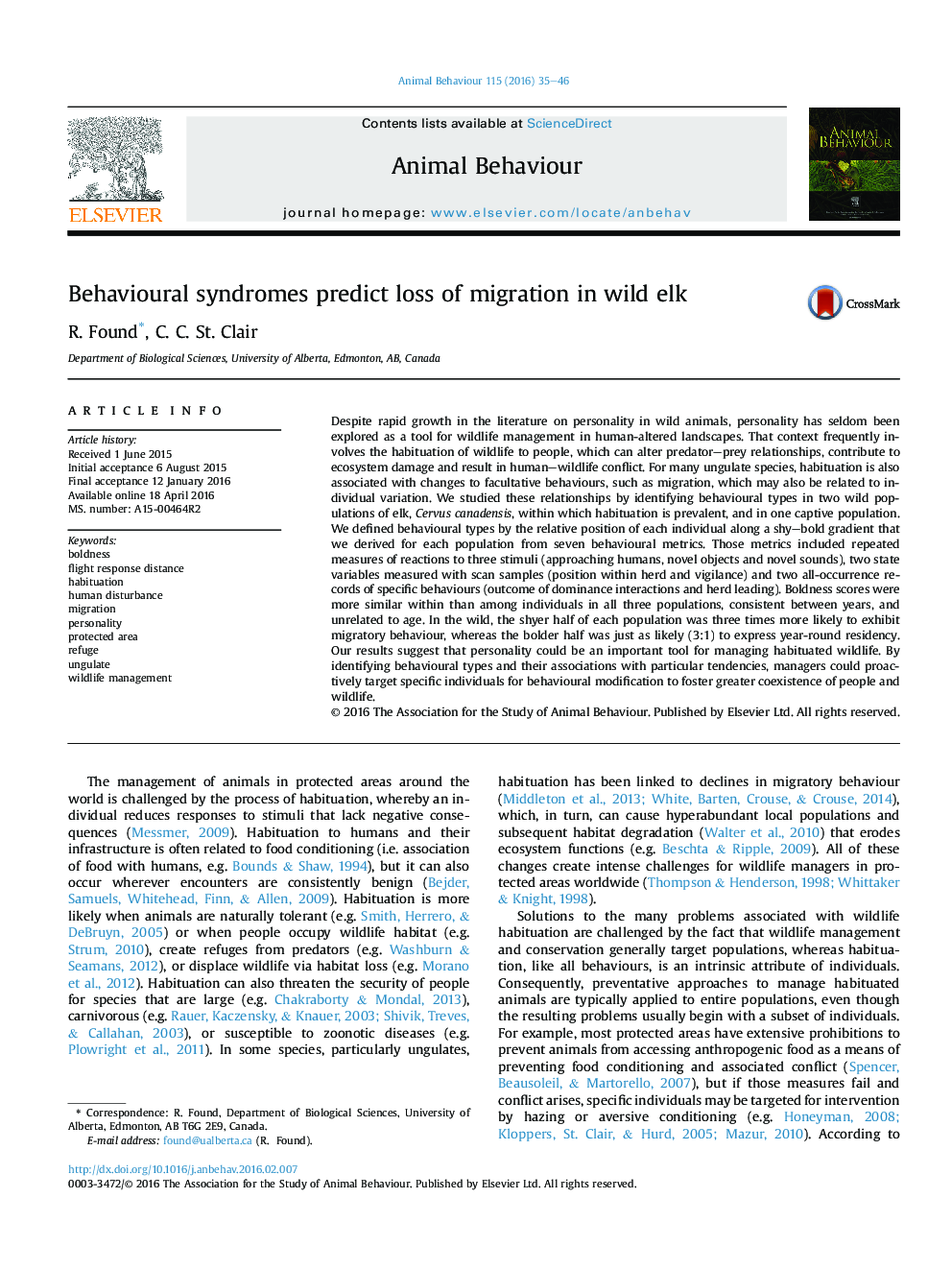| Article ID | Journal | Published Year | Pages | File Type |
|---|---|---|---|---|
| 8489079 | Animal Behaviour | 2016 | 12 Pages |
Abstract
Despite rapid growth in the literature on personality in wild animals, personality has seldom been explored as a tool for wildlife management in human-altered landscapes. That context frequently involves the habituation of wildlife to people, which can alter predator-prey relationships, contribute to ecosystem damage and result in human-wildlife conflict. For many ungulate species, habituation is also associated with changes to facultative behaviours, such as migration, which may also be related to individual variation. We studied these relationships by identifying behavioural types in two wild populations of elk, Cervus canadensis, within which habituation is prevalent, and in one captive population. We defined behavioural types by the relative position of each individual along a shy-bold gradient that we derived for each population from seven behavioural metrics. Those metrics included repeated measures of reactions to three stimuli (approaching humans, novel objects and novel sounds), two state variables measured with scan samples (position within herd and vigilance) and two all-occurrence records of specific behaviours (outcome of dominance interactions and herd leading). Boldness scores were more similar within than among individuals in all three populations, consistent between years, and unrelated to age. In the wild, the shyer half of each population was three times more likely to exhibit migratory behaviour, whereas the bolder half was just as likely (3:1) to express year-round residency. Our results suggest that personality could be an important tool for managing habituated wildlife. By identifying behavioural types and their associations with particular tendencies, managers could proactively target specific individuals for behavioural modification to foster greater coexistence of people and wildlife.
Keywords
Related Topics
Life Sciences
Agricultural and Biological Sciences
Animal Science and Zoology
Authors
R. Found, C.C. St. Clair,
